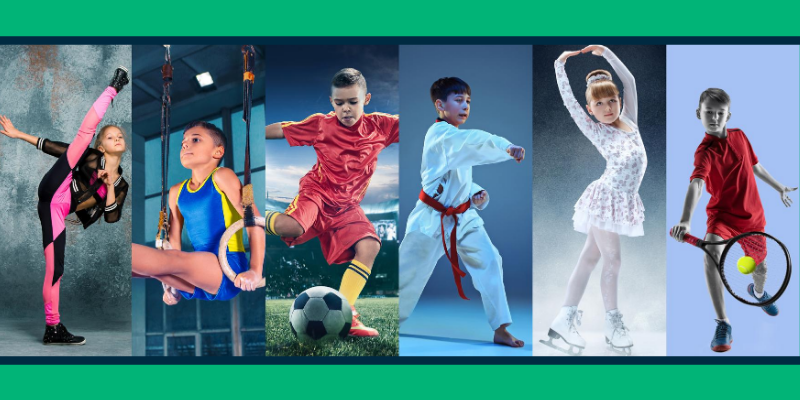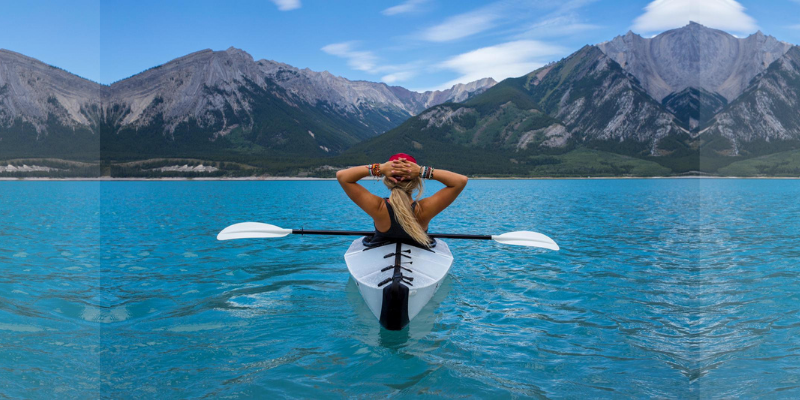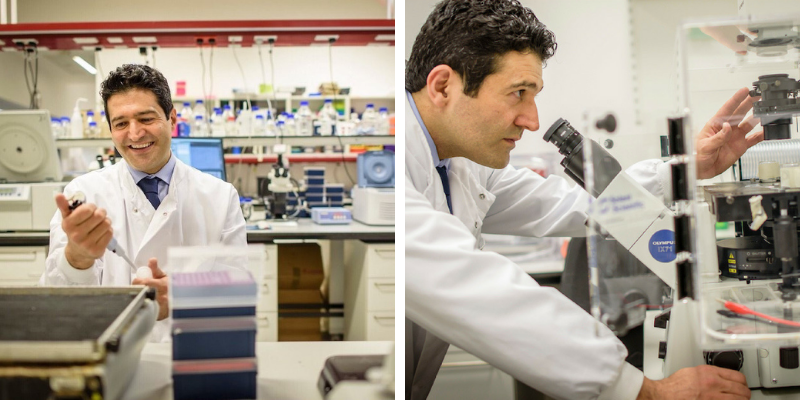It is easy to forget that some of the most successful athletes reach the pinnacle of their career before reaching adulthood. With many sports such as; gymnastics, iceskating and diving - breeding champions as young as 13 or 14 years old. Growing up and facing changes in the body is difficult enough for any ordinary teenager, but can you imagine adding elite athletic training to the list?
To gain an insider perspective, we talk with 14-year-old Junior Elite Diver, Brooke Cullen. We also speak with professional Rehabilitator and Trainer at Elevate Sport, Liam Grimely to learn how young athletes can train sensibly and best look after their bodies to perform at their best.
THE CHALLENGES OF GROWING
“When enough was enough I had to take a step back and recover...I have dealt with several growing pains throughout my training over the last three years” says Cullen, who is currently on the pathway towards competing for Great Britain. “I have been suffering from Osgood Schlatter’s disease which affects your knees when your bones are growing. I’ve also dealt with pains in my back and wrists with the intensive elite training schedule that I have been following.”

Cullen’s experience is sadly not unique, with many young athletes having to overcome similar challenges as their bones and muscles grow at different rates, often resulting in joint, tendon and muscle pain. Liam Grimley explains,
“Young athletes’ bodies are changing all the time in response to training and maturing. Even your centre of balance changes as you grow taller. Adult bones have stopped lengthening, whereas the young skeleton is still growing. Most growing pains occur in the legs but can be present in the spine and other areas. They appear to be more common in active children.”

LISTENING TO YOUR BODY
These body changes mustn’t be taken lightly, and alongside coaches and parents, young athletes need to adapt their regimes and train sensibly. “The young athlete and their coach must listen to the body and be guided by it,” continues Grimley. “They should be aware of their growing body when training and recovering. After training, young athletes should get into the habit of listening to their body and prioritising rest and recovery. Hydrate, refuel and replenish. The young athlete should do what they can to promote recovery.”
At 14-years old Brooke Cullen admits that she doesn’t yet have the skills and experience to look after herself perfectly, but she is constantly learning and improving her recovery procedures. As she explains: “With the challenges that growing pains have caused, I have already learnt a lot about my body and my training over the last few years. Luckily I have a great coach who ensures I am looking after myself, and understands me and my body very well.”

BIOELECTRICAL SUPPORT
In recent times, young athletes have turned to alternative therapies to aid their training and help growing pains. Bioelectric technology being a popular option that is non-invasive, drug-free and portable. Grimely explains;
"In recovery mode, the gentle stimulation from a bioelectrical device helps with; blood flow, the removal of fatiguing byproducts of exercise and delivery of nourishing blood for healing and recovery. Muscle tone is more readily relaxed back to a healthy resting state, facilitating relaxation and the recovery process. I have found this reduces levels of DOMS and allows for a quicker return to training readiness."
Cullen is a huge believer in the benefits of bioelectrical therapy and uses her NuroKor device on a daily basis to promote recovery.
“When I go heavy on training I get some minor aches,” says Cullen. “NuroKor really does take the edge off those aches and pains and gives me the confidence to train again the next day. I use it regularly on my shoulders, back and legs.”

VARIETY IS THE SPICE OF LIFE
Like most athletes competing in sports where competitors peak at an early age, Cullen already has a very specific training regime for diving. But Grimley warns of the risk of specialising too early: “With young athletes, it is particularly important to ensure variety in training to keep things exciting but also to avoid hyper-specialisation too soon. Young athletes should be encouraged to explore movement and try lots of new things. You can not underestimate the importance of fun and play.”

An article in the Sports Health Journal about Sports Specialisation in Young Athletes* supports Grimley’s recommendations, concluding that “some degree of sports specialisation is necessary to develop elite-level skill development. However, for most sports, such intense training in a single sport to the exclusion of others should be delayed until late adolescence to optimise success while minimising injury, psychological stress, and burnout.”
FOOD COMES FIRST
The life of a young athlete and their coach is definitely not straightforward, both need to be aware of the young athletes’ body and mind. One element of junior elite training which must not be forgotten is nutrition. It is hugely important for teenage athletes, with the building of a positive relationship with food being vital.

Grimley explains more: “We know food is fuel, but we should also see food and meals as a key part of the recovery, rebuilding and nourishing of young athlete’s bodies’ and brains. It is important for young athletes to eat a wide variety of whole, fresh foods of various colours. It is crucial to instil a positive relationship with food and nutrition from a young age. Get a positive, food first diet in place early on. And as a rule, supplements should be just that, a supplement.”
AVOID INJURY TO SUCCEED
Young athletes already devote huge amounts of time to their sport, and as Cullen says “you have to be prepared to give up a lot of your personal life to train and work towards your goals. You have to have the passion to want to succeed and excel in your sport.”

This kind of attitude is vital to success, but Grimley reminds, much like Brooke Cullen is, other young athletes need to be mindful of their bodies if they want to succeed and reach the pinnacle of their sports:
“If young people don’t look after their bodies, they will end up sidelined with injury, and consistency goes out the window. This interrupts training and preparation and can severely hamper progress. More importantly, aches and pains that are not taken care of can turn into long term injuries that can become serious problems further down the line.”

Many of our young NuroKor athletes use their NuroKor mibody device to complement their training regimes and focus on their recovery. Find out more about the NuroKor mibody and it’s benefits here.
To learn more about Liam Grimley and Elevate at www.elevatesport.co.uk or on Instagram,@elevatesport
To learn more about Brooke Cullen and her diving journey read her introductory NuroKor blog: ‘Southend Junior Elite Squad Diver, Brooke Cullen Set To Make A Big Splash In the Elite Diving Comp’ or follow her Instagram, @brooke_diving
*Link to the summary of ‘Sports Specialistion in Young Athletes’, Sports Health Journal: https://www.ncbi.nlm.nih.gov/pmc/articles/PMC3658407/



